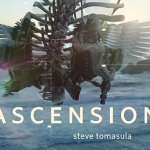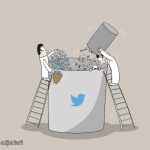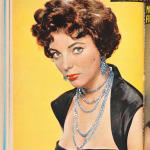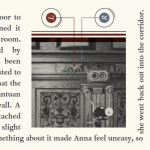2024
In conversation, Scott Rettberg engages with Roderick Coover and his multiplicitous career that started off as a forest ranger, a cinema projectionist, "a ski bum" and (further along) a winemaker in Burgundy, a couple of years of participant observation in Africa, the first all-electronic dissertation at the University of Chicago, works of combinatory cinema and other "differing narratives" that emerged in a still (inter)active literary and multi-medial career.
2023
Taking an ironic, Icarian twist on Steve Tomasula's Ascension, Stuart Moulthrop situates Tomasula's novel in a subterranean, encyclopedic lineage that includes print fictions like Joyce’s Ulysses, Dos Passos’ U.S.A. trilogy, Pynchon’s Gravity’s Rainbow, DeLillo’s Underworld, David Foster Wallace’s Infinite Jest, and Zadie Smith’s White Teeth – novels that are, as Edward Mendelson put it, “the products of an epoch in which the world's knowledge is larger than any one person can encompass.” It's an experimental lineage that is, arguably, one of the more noteworthy carryovers from print to digital literature; a genre that Moulthrop (2013) and his near contemporary Michael Joyce (2007) have termed the “novel of internet.”
2021
Renren Yang insightfully reveals the rarely (if ever) explored domain of cover designs for Chinese Web novels. Tracing their evolution from a print format that enables the tactile and sensual pleasures of opening the actual book to its supposedly more immaterial digital incarnation, Yang reimagines the very idea of a book cover in the digital age. This closer look reveals how serialized novels’ cover design frames the reader's experience, demonstrating as well the fact that the already well established periodization of the First, Second, and Third Generation e-literature are culturally and geographically specific, and dependent on the local histories of computing technology beyond Euro-American context. Analyzing the conceptual tension and fusion between book cover as a “mixed medium” and digital cover as “intermedium,” and drawing upon Chinese pictorial tradition, Yang defines the ontology of the digital book cover as an attempt at reconfiguring “flatness” on the digital screen.
2020
A comprehensive summary of a career that, unlike those of Warhol, Lichtenstein, Katz or most other contemporaries, lets us recognize Joe Brainard as an antecedent of our current, dispersed and all-embracing digital arts practices. As Nathan Kernan argues in 2019, our multimodal online habitus “looks more and more like a Joe Brainard world.” Wojciech Drąg takes us further into Brainard's lifelong refusal of artistic grandeur. An aesthetic of visual attention that purifies objects and pieces of writing where Brainard wonders if he can ¨get by without saying anything.¨
2018
In this essay, Doris Hambuch uses the image-based work of Arabic cartoonist Khaled Al Jabri to address concerns of technological dependence to reconsider our use of screens. Rather than simply reprimanding readers about the potentially negative dependence of our contemporary society on technology and its screens, Hambuch instead proposes that we look to Al Jabri's work as a way of reconsidering the role of the screen in visual poetics and graphic literature.
A first draft of this essay was presented at the 2017 ELO Conference at Porto, in a panel organized by the "Nar-Trans" group of the University of Granada.
What binds literature, electronic literature and games is "the shaping and networking of the imagination." Drawing on the ideas of Damasio, Walton and Sartre, Gordon Calleja looks at the synthesizing role of the imagination in narrative indie games.
2011
Jussi Parikka interviews artist Zoe Beloff about her relationship to the emerging set of interdisciplinary theories and methodologies known as media archaeology. In way of response, Beloff discusses some past works, including: Lost (1995), Shadow Land (2000), Claire and Don in Slumberland (2002), Charming Augustine (2005), The Somnambulists (2008), and The Dream Films (2009).
2010
Marie-Laure Ryan argues that dysfunctionality in new media art is "not limited to play with inherently digital phenomena such as code and programs," and provides a number of alternative art examples, while also arguing that dysfunctionality "could [also] promote a better understanding of the cognitive activity of reading, or of the significance of the book as a support of writing."
2004
Jan Baetens looks 'through' and 'at' Bolter and Gromala's Windows and Mirrors and finds a foggy vision.
2002
Christine Bucher, reviewing Beatriz Columnina, considers the narrative and photographic dimensions of interiors designed by Adolf Loos and Le Corbusier.
2000
hypertext? cybertext? hypermedia? webart? while new media critics debate the terms, Talan Memmott has produced the thing itself, a creative use of applied technology.
1999
Ted Pelton views Robert Creeley's image/text collaborations in Buffalo, NY.
1998
Steffen Hantke presents an archeology of Don DeLillo's Underworld.
The culmination of ebr version 2.0 (an html- and java-based Web production), the spring 1999 "gathering of threads" introduced an important component into the journal design: the thREAD that actively conducts readers among affiliated essays.
J. Hillis Miller looks at the "multimedia" Victorian novel, embodied in ink, paper, cardboard, and glue.
In collecting essays for ebrs 6 and 7, the editors sought work that would not only talk about image and narrative theory in the networked environment; we wanted essays with design elements in their very construction. The essays were presented in the context of Anne Burdick's first integral design for the journal itself, ebr version 2.0.
1997
Marta Werner uncages Emily Dickinson's fragments.









